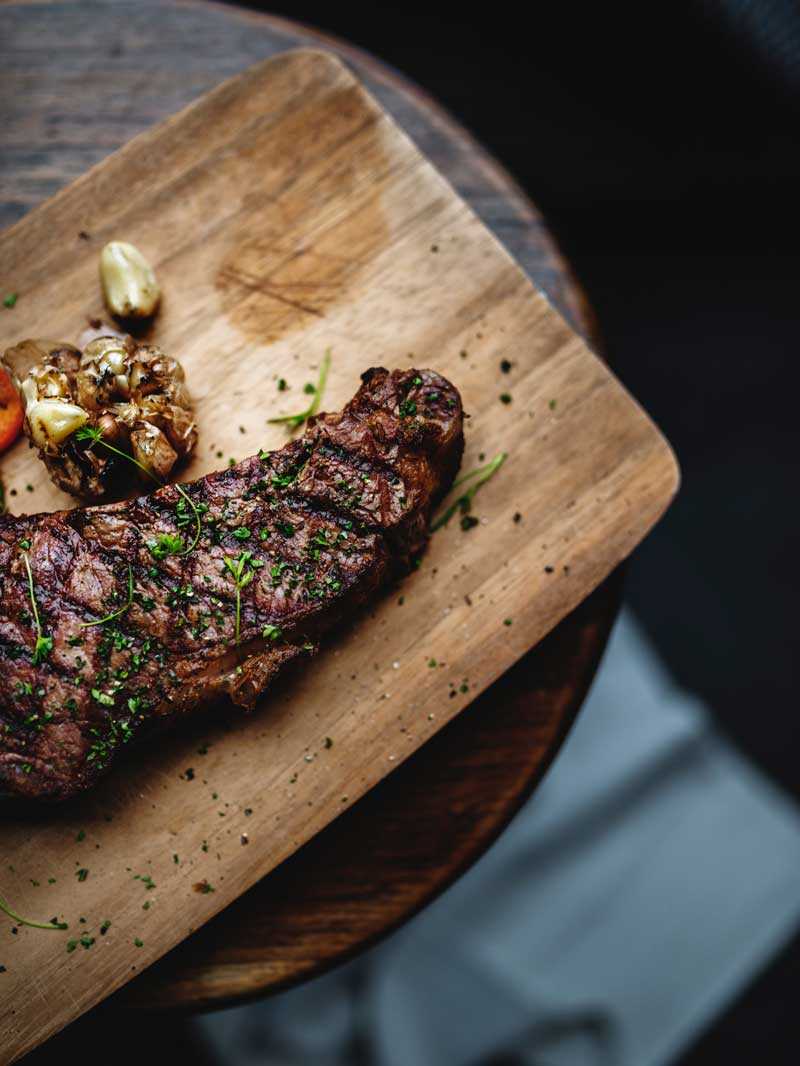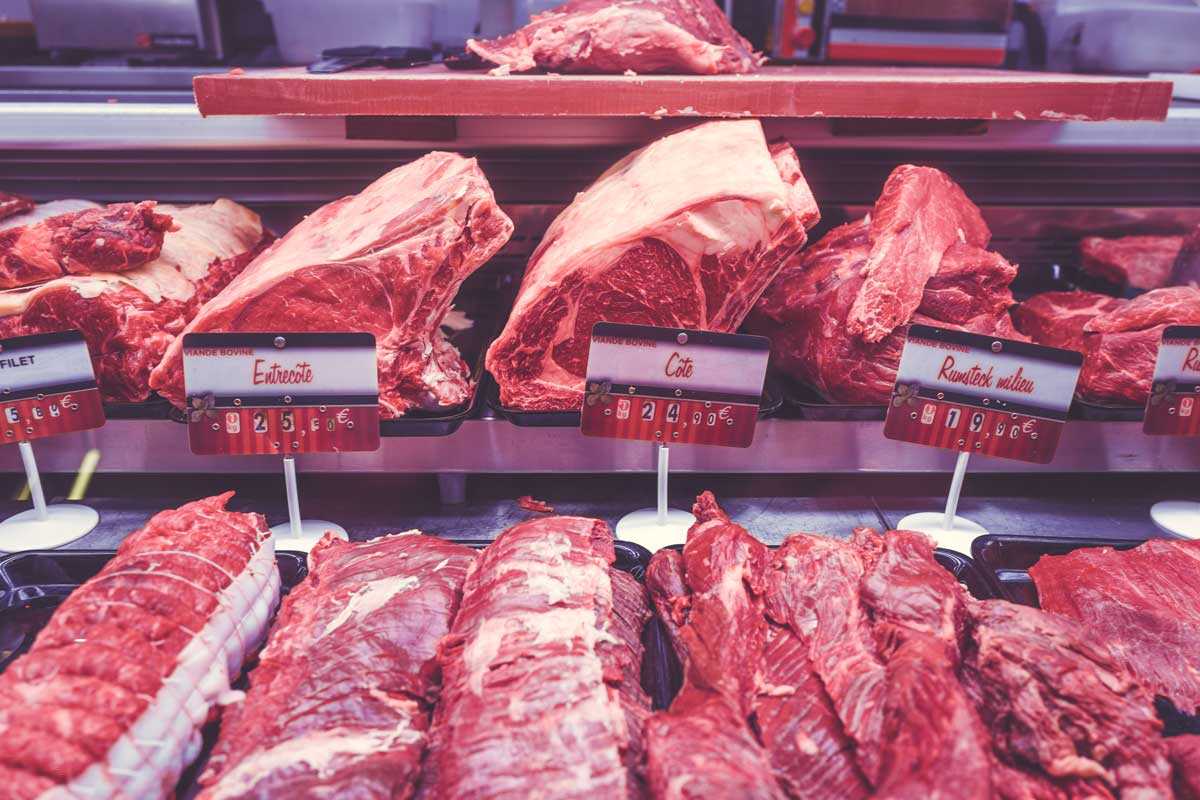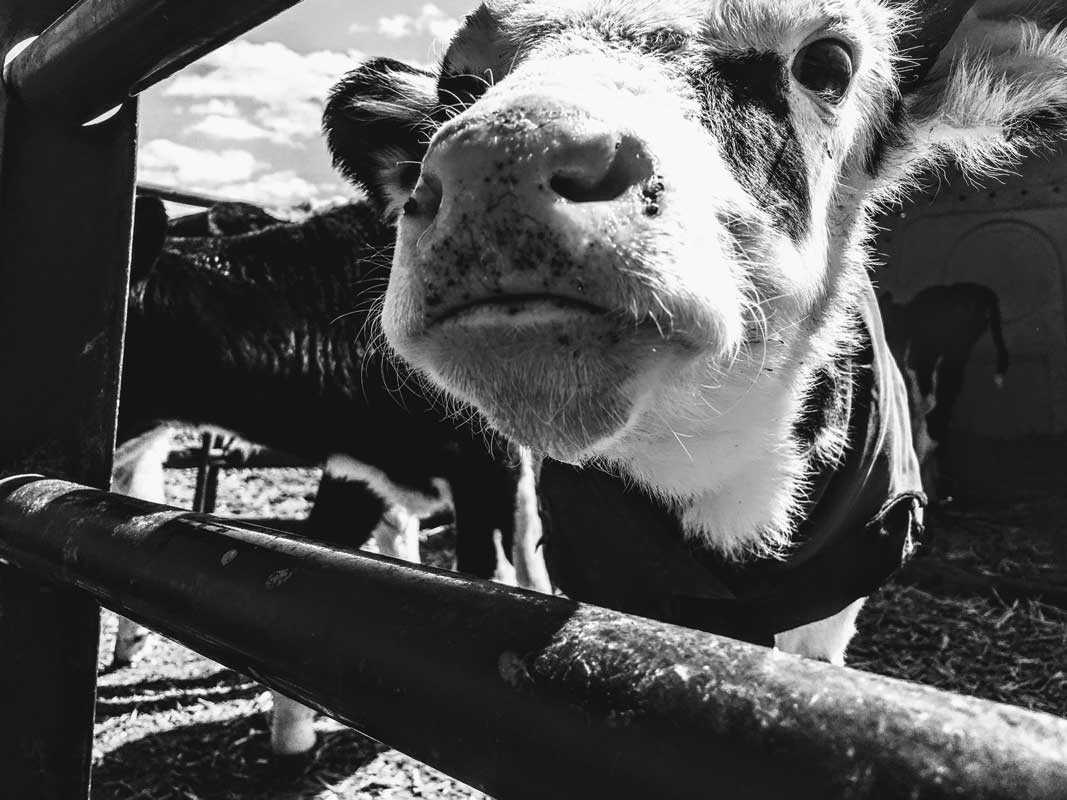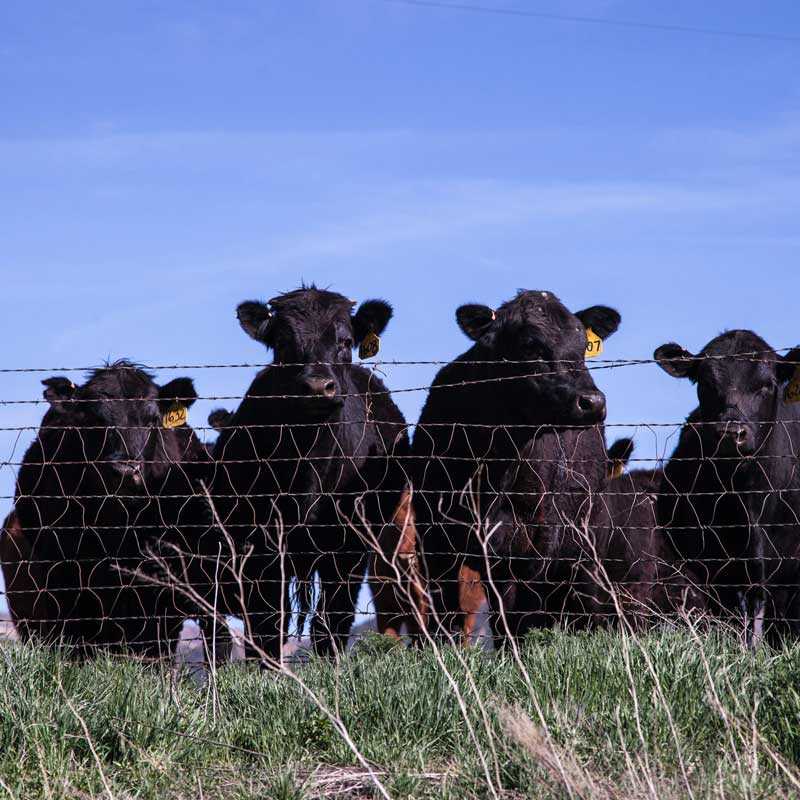Beef Quality Grades & Effects of Bruising
Equipment Matters: Designing Pens, Chutes, and Floors to Prevent Bruises
Go Back to All BlogsPosted on: December 21, 2025
Updated on: December 22, 2025
Author: Dana Charban
SHARE:
Animal welfare issues that need to be addressed in a cattle operation can be seen through bruised meat and dark cutters. It's estimated that bruising costs the beef cattle industry $35 million annually. Bruised meat has a reduced beef quality and grade. This means diminished profits, and in the worst-case scenario, unsalable meat when ranchers and cattle producers go to market. Bruised meat is more likely to grow bacteria, and is therefore discarded. Loss is approximately 2 to 3 pounds for small bruises, and up to 100 pounds for large bruises.
"Cattle are bruised by hard bumps against protruding objects and by horns. Sticks and canes used as persuaders on the farm and at the market cause serious bruising and should be avoided. When animals are slaughtered, these bruises must be trimmed from the carcass, causing an economic loss,À state faculty at Virginia Tech.

Today's cattle are taller and wider than they were even five years ago. However, the equipment being used, including chutes and trucks, are often older models designed for shorter and narrower cattle. Investing in newer equipment designed for the size of cattle being raised can quickly pay off in fewer bruises and lost revenue, while enhancing the animal welfare standards of your operation.
Research on Bruising
Animal factors including sex, breed, and animal age at slaughter are factors in bruise development according to research. However, proper care and management of cattle can decrease bruises despite the animal factors, and are imperative to providing the best animal welfare standards.
A study conducted in Uruguay, a country that produces a large amount of cattle, found that 60% of carcasses observed had at least one bruise, and this means financial loss. In this study, the loss equated to 899 grams of high quality meat per animal that the producer was not being paid for. The rump or round zone was most frequently bruised, and this is an expensive portion of the carcass. The rib, shoulder and loin were other frequent bruise sites.
Manitoba Beef Producers conducted a study and found that following transport 85% of cattle had bruises, and 17% of these were considered severe in cull cows and 20% were severe in finished cattle. The average number of bruises per animal was five for cull cows and 1.18 on finished cows.

Cattle Handling and Equipment
Rough handling causes 50% of all bruises states Temple Grandin. "Bruises are most likely to occur when animals hit an object with a small diameter such as the edge of a steel bar or a nail sticking out of a fence. An animal striking the comer of a square 10 cm diameter post is more likely to bruise than an animal striking a round 10 cm diameter pipe post,À she states. Horned cattle can have up to twice as many bruises.
"Investing in newer equipment designed for the size of cattle being raised can quickly pay off in fewer bruises and lost revenue, while enhancing the animal welfare standards of your operation."
Dana Charban
Avoiding bruises in cattle starts at home. Even working cattle too quickly can cause bruises as they push against the chutes and other equipment, or each other. All employees should be taught proper cattle handling techniques and should have regular reviews. Having the proper equipment that meet the needs of your cattle operation is an important first step in minimizing bruising in cattle.
Equipment with smooth sides will not cause bruises. Smooth surfaces with no protruding objects are imperative in chutes, alleys, tubs, and other equipment. Regular maintenance and equipment checks prior to use should be part of any cattle handling routine.
Correctly sized cattle chutes and other handling equipment will minimize bruising that could occur in equipment that is not designed for the animals notes Roy Lewis, DVM. Flooring is also critical. Animals that slip can fall and become bruised. Rib-checkered steel flooring and maintenance-free rubber flooring in Arrowquip equipment increase cattle comfort and prevent slips and falls.
Steps can be taken to minimize bruising in your beef cattle.
These steps include:
Proper cattle handling. All animal handlers should be trained using one of the available certifications from the beef cattle industry.
Use cattle equipment designed for your animals and operation.
Ensure there are no sharp or protruding objects in cattle equipment, pens, and trailers. Regular checks should be scheduled.

Minimize transport bruises
Do not overload or under-load trucks with cattle.
Trucks should be tall enough that cattle do not hit their backs. They should have non-slip floors and bruise-free paneling.
Vehicles should be maintained for a smoother ride.
Drive with care. Roads that haven't been maintained well or are uneven can lead to increased bruises. High speeds also increase bruising.
Avoid routes with multiple starts and stops.
Guillotine-type doors at the rear of a trailer can cause injury and bruising, especially in the back and rump zones.
Cattle should be loaded and unloaded using proper handling techniques.
Cattle in the doghouse portion of the trailer will have the most bruising. Avoid using this area if possible.
Unload cattle in a timely fashion. The longer they wait in the truck, the more likely they are to be bruised.

Avoid mixing new groups of cattle together prior to processing and during transport.
Bulls should be penned separate from cows at the packing plant and prior to transport at home.
Cattle with increased fat cover do not bruise as easily.
Raise polled animals when possible. Horns should be removed or tipped on animals that aren't polled.
We have addressed the issue of larger cattle through research, development and engineering at Arrowquip. Cattle handlers can tailor our fully adjustable alleys and chutes to the size of their cattle. Coupled with our other design and safety features, Arrowquip offers an unparalleled cattle-handling experience.
10 Reasons you need a proper cattle chute
Try the pressure zone, the better way to handle your cattle
Sources:
Virginia Tech
Temple Grandin
Roy Lewis, DVM article in Canadian Cattlemen
Bruising in Slaughter Cattle Research
Huertas, van Eerdenburg, Gil & Piaggio: Economic Impact/Bruises
Temple Grandin: Bruise Levels on Fed & Non-Fed Cattle
Examining the Impact of Transportation on Cattle
Bruised Beef: Causes and Prevention Strategies
Managing Cattle to Reduce DCB